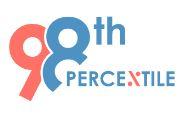Creating Interactive Quizzes with Python
Please help us keep this calendar up to date! If this activity is sold out, canceled, or otherwise needs alteration, email mindy@kidsoutandabout.com so we can update it immediately. If you have a question about the activity itself, please contact the organization administrator listed below.
Python is a versatile programming language widely used for building applications, analyzing data, and even creating interactive learning tools. One exciting application of Python is designing interactive quizzes that are engaging, educational, and fun. Whether you’re a teacher, developer, or hobbyist, Python makes creating quizzes easy and dynamic.
Why Use Python for Quizzes?
Using Python to create quizzes offers several benefits:
- User-Friendly Syntax: Python’s simple and readable syntax makes it accessible to beginners.
- Flexibility: Customize quizzes to include multiple-choice questions, true/false statements, or short answers.
- Automation: Automatically calculate scores and provide instant feedback to users.
- Integration: Combine quizzes with other Python applications for e-learning platforms or gamified experiences.
Getting Started with Python Quizzes
1. Set Up Your Environment
- Install Python from python.org.
- Use a code editor like VS Code, PyCharm, or Jupyter Notebook for writing and running your script.
2. Plan Your Quiz
- Decide the type of quiz: Multiple-choice, True/False, or Short Answer.
- Create a list of questions and answers.
- Define the scoring criteria.
Basic Code Structure for a Quiz
Here is a simple Python script for a multiple-choice quiz:
# Quiz Questions and Answers
questions = [
{
“question”: “What is the capital of France?”,
“options”: [“A. Berlin”, “B. Madrid”, “C. Paris”, “D. Rome”],
“answer”: “C”
},
{
“question”: “What is 5 + 7?”,
“options”: [“A. 10”, “B. 12”, “C. 15”, “D. 20”],
“answer”: “B”
},
{
“question”: “Which programming language is known as the language of AI?”,
“options”: [“A. Python”, “B. Java”, “C. C++”, “D. Ruby”],
“answer”: “A”
}
]
# Initialize Score
score = 0
# Quiz Loop
for q in questions:
print(q[“question”])
for option in q[“options”]:
print(option)
# Get User Input
user_answer = input(“Enter your answer (A, B, C, or D): “).strip().upper()
# Check Answer
if user_answer == q[“answer”]:
print(“Correct!\n”)
score += 1
else:
print(f”Wrong! The correct answer was {q[‘answer’]}\n”)
# Display Final Score
print(f”You scored {score} out of {len(questions)}”)
Enhancing Your Quiz
1. Add a Timer
Introduce a time limit for each question using the time module.
import time
start_time = time.time()
# Code for the quiz
end_time = time.time()
print(f”You completed the quiz in {end_time — start_time:.2f} seconds.”)
2. Randomize Questions
Shuffle the order of questions using the random module.
import random
random.shuffle(questions)
3. Store Results
Save user scores in a text file or database for tracking progress.
with open(“quiz_results.txt”, “a”) as file:
file.write(f”User scored {score} out of {len(questions)}\n”)
4. GUI-Based Quiz
Use libraries like tkinter or PyQt to create a graphical interface for your quiz.
Best Practices for Creating Python Quizzes
- Use Clear Instructions: Ensure that the quiz instructions are straightforward.
- Validate Inputs: Handle invalid inputs gracefully to avoid crashes.
- Include Feedback: Provide immediate feedback after each question.
- Test Thoroughly: Run the quiz multiple times to fix bugs and ensure accuracy.
Applications of Python Quizzes
- Education: Create quizzes for classroom teaching or online courses.
- Corporate Training: Develop interactive assessments for employee skill-building.
- Entertainment: Build trivia games for fun and engagement.
- E-Learning Platforms: Integrate quizzes as part of gamified learning experiences.
Conclusion
Python quizzes are an excellent way to combine learning with interactivity. With its flexibility and ease of use, Python allows you to design quizzes that are both educational and entertaining. Whether you’re a beginner or an experienced developer, creating quizzes with Python is a rewarding project that showcases your creativity and technical skills. Start building your own Python quiz today and make learning fun!
*Times, dates, and prices of any activity posted to our calendars are subject to change. Please be sure to click through directly to the organization’s website to verify.


